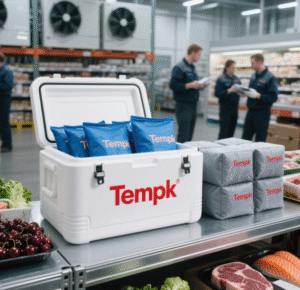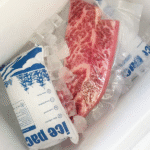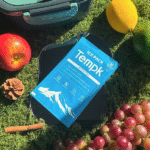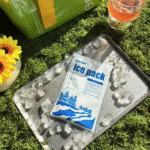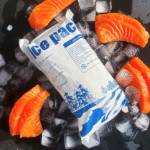Cold Pack vs Dry Ice: Which Is Best for Temperature‑Sensitive Shipments?
When it comes to maintaining the correct temperature during transport, cold pack vs dry ice is a key decision. Both options have their benefits and ideal uses, but choosing the right one depends on your shipment’s needs. This guide will help you understand the difference and make an informed choice based on duration, temperature requirements, and costs.
-
How cold packs and dry ice work and their ideal temperature ranges
-
Which shipping scenarios benefit most from cold packs and which from dry ice
-
Key factors to consider when choosing between cold packs and dry ice
-
Cost and environmental considerations for each option
-
Best practices for packing temperature‑sensitive goods
How Do Cold Packs and Dry Ice Differ in Cooling Power?
Cold packs provide cooling by utilizing a chemical reaction that keeps items at temperatures between 0–8°C, while dry ice maintains ultra‑cold conditions as low as –78.5°C. Cold packs are perfect for refrigerated goods, while dry ice is ideal for frozen items such as vaccines, biological samples, and frozen foods.
Choosing between the two comes down to your temperature needs. If you need to keep something cool but not frozen, cold packs are your go‑to option. However, if your shipment needs to stay below freezing for extended periods, dry ice is far more effective.
Cold Pack vs Dry Ice: Temperature Range Comparison
| Cooling Method | Temperature Range | Ideal Use | Shipping Duration |
|---|---|---|---|
| Cold Packs | 0–8°C | Pharmaceuticals, food, medical supplies | Up to 48 hours |
| Dry Ice | –78.5°C | Frozen foods, vaccines, biologics | 24–72 hours |
Practical Tips
-
For refrigerated shipments: Choose cold packs that maintain stable temperatures for up to 48 hours.
-
For frozen shipments: Use dry ice to keep items below freezing for days.
-
For mixed loads: Use both—cold packs on top of dry ice to maintain safe temperatures.
Real Case: A biotech company successfully shipped a batch of vaccines using a combination of cold packs and dry ice, ensuring proper temperature control for 72 hours.
When Should You Choose Cold Packs Over Dry Ice?
Cold packs are best when you need to maintain temperatures between 2°C and 8°C. This makes them ideal for products like fresh produce, pharmaceuticals, and other temperature-sensitive goods that don’t require freezing. They are easier to handle than dry ice, non-toxic, and typically cheaper, especially for shorter shipments.
If you’re shipping perishable goods for a few days, cold packs are an efficient and cost‑effective choice.
Cold Pack Applications
-
Medical Supplies: Cold packs help keep injectable medications or insulin at the right temperature.
-
Food Transportation: Cold packs are ideal for keeping dairy products, meats, and other fresh foods safe during transit.
-
Overnight Shipping: For shorter shipping durations, cold packs can maintain the required temperature with minimal risk of freezing.
How Cold Packs Compare to Dry Ice for Shipping Durations
| Product Type | Cold Pack Duration | Dry Ice Duration | Best Use |
|---|---|---|---|
| Insulin | 24–48 hours | 72 hours | Cold pack for short trips, dry ice for long‑term storage |
| Frozen Foods | 24–48 hours | 72 hours | Dry ice for extended trips |
| Biologics | 48 hours | 72 hours | Cold pack for short transit, dry ice for critical shipments |
When Should You Choose Dry Ice Over Cold Packs?
Dry ice is perfect for items that need to stay at ultra‑cold temperatures, typically well below 0°C. This makes dry ice the go‑to solution for shipping frozen foods, biological samples, and vaccines. Dry ice can maintain temperatures well below freezing for days, making it ideal for long shipments.
However, handling dry ice requires care due to its extremely low temperature, and it must be properly ventilated to prevent gas buildup in the container.
Dry Ice Applications
-
Frozen Foods: For items like ice cream or frozen meats that need to remain frozen for extended periods.
-
Vaccines and Biologics: Dry ice ensures that sensitive medical shipments stay frozen, ensuring their efficacy.
-
Longer Shipping Durations: Dry ice is the best option for shipments that will be in transit for several days.
Dry Ice vs Cold Pack for Long Shipments
| Shipping Duration | Cold Pack Effectiveness | Dry Ice Effectiveness | Best Use |
|---|---|---|---|
| 1–2 days | Effective | Effective | Cold pack for moderate temps, dry ice for freezing |
| 3–5 days | Limited effectiveness | Effective | Dry ice for extended freezing |
| 5+ days | Ineffective | Effective | Dry ice to ensure constant temperature |
User‑Focused Tips
-
For shipping perishable foods: Use cold packs if the trip is short; switch to dry ice for longer durations or frozen goods.
-
For transporting vaccines: Dry ice is critical to maintaining the necessary low temperatures for medical shipments.
-
For mixed shipments: Consider using both—cold packs to regulate non‑frozen goods, dry ice to ensure frozen products stay intact.
Environmental and Cost Considerations: Cold Packs vs Dry Ice
While cold packs are typically more eco‑friendly since they don’t produce gas like dry ice, dry ice offers better performance for extremely low temperatures. However, both methods have minimal environmental impact when used properly. Dry ice, though, can be more costly and require specialized handling compared to cold packs, which are easier to use and dispose of.
Cost Comparison for Cold Packs and Dry Ice
| Method | Average Cost per Shipment | Environmental Impact | Ideal Use |
|---|---|---|---|
| Cold Packs | $10–$30 | Low, non‑toxic | Short shipments, pharmaceuticals |
| Dry Ice | $25–$50 | Higher (sublimates) | Long shipments, frozen foods |
2025 Trends in Cold Chain Packaging: Innovations and Regulations
The cold chain industry is moving toward more efficient and sustainable solutions. In 2025, there’s a growing demand for eco-friendly packaging materials and more precise temperature monitoring tools. Regulations around shipping with dry ice are tightening, requiring more robust safety measures for venting and labeling.
Latest Trends
-
Biodegradable packaging: More shipping solutions now use recyclable or compostable materials.
-
Real‑time temperature tracking: Smart data loggers allow for better monitoring during long shipments.
-
Improved dry ice insulation: New technologies reduce the sublimation rate, increasing dry ice efficiency.
Market insight: Cold chain logistics is expected to grow by 8% annually due to the rising demand for temperature‑sensitive pharmaceuticals and e-commerce food delivery.
Frequently Asked Questions {#faq}
Q: Can I use both cold packs and dry ice in the same shipment?
Yes—use cold packs for refrigerated items and dry ice for frozen goods to optimize temperature control.
Q: How do I dispose of dry ice properly?
Allow dry ice to sublimate in a well‑ventilated outdoor area, away from children and pets.
Q: Are cold packs reusable?
Yes—many cold packs can be reused by simply refreezing them after use.
Summary & Takeaways
When shipping temperature‑sensitive goods, choosing between cold packs and dry ice depends on the temperature needs and duration of the shipment. Cold packs are ideal for short trips and refrigerated goods, while dry ice is necessary for longer trips and frozen items. Always consider cost, environmental impact, and handling requirements to make the best decision.
What to Do Next
-
Calculate your shipment’s cooling needs with our shipping calculator.
-
Order from our cold chain packaging collection to get the best solution for your products.
-
Share this guide with your team to streamline your shipping processes.
About Tempk
Tempk specializes in providing premium temperature‑controlled packaging for all industries, from pharmaceuticals to food shipping. We offer advanced solutions that ensure your products remain within the required temperature range, reducing risks and improving delivery reliability.
Ready to optimize your cold chain? Contact us for customized solutions today.






